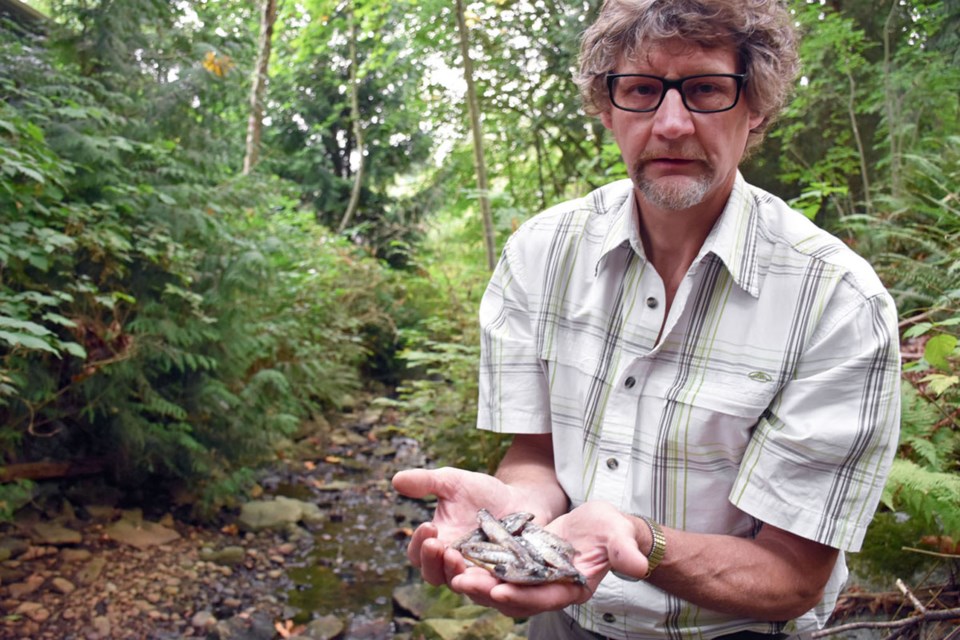Toxic runoff from a murder victim’s burning Jeep killed dozens of young fish in a Burnaby Mountain creek recently.
On Aug. 10, Burnaby firefighters doused the flaming vehicle around 2 a.m. on Ashgrove Crescent. They took precautions to control the flow of contaminated water from the fire, including blocking a nearby storm drain and using a product called Absorb All to soak up fuel, oil and other dangerous materials, according to fire chief Joe Robertson.
But it appears the water ran down the street and eventually reached a nearby tributary of Stoney Creek.
“It’s obviously an oversight and it’s too bad, too bad the fish died,” Robertson said.
Police said the Jeep had belonged to Leonardo Ngo, a 20-year-old who was stabbed to death in Surrey on Aug. 6.
Investigators had issued a public plea to find Ngo’s Jeep.
The morning of the fire, local streamkeeper John Templeton noticed “a change in the bottom of the creek.”
“There was a black kind of sediment that’s not normally there.”
Later that day, he decided to investigate further and walked up the creek.
“The first pool I came to, I saw 10 dead fish,” he said. “That really raised an alarm bell. I looked around a little bit more, saw more dead fish, so immediately I came home and I started phoning all the necessary authorities.”
Later joined by a City of Burnaby employee, Templeton said he found more than 50 dead coho salmon and cutthroat trout fry.
Templeton visits the creek every day, where he tests the water for salinity and sediment, ensuring its safety for the local fish. As the president of the Stoney Creek Environment Committee, he said he was proud to see salmon return to spawn in the creek in 2004 and return every year since.
Templeton said he was heartbroken to see the devastation in the creek.
“Quite honestly, these fish are like my children. I was holding back tears. I was totally traumatized and upset because I’ve been volunteering to bring fish back to the creek.”
Templeton believes there were far more fish killed than the 50 or so he found while inspecting the creek area.
He said it could have been any number of substances from the vehicle – anti-freeze, gasoline, oil, melted plastic – that killed the fish.
Ensuring local fish populations remain healthy is vital, Templeton said, “because water is life and if you have a creek with fish in it, that tells you that that water is probably safe to drink.”
“Why do people want to live in communities with trees, with water, with fish? Because it’s good for the heart, it’s good for the soul, it makes us feel good.”
Templeton said he was disappointed in the response from officials who failed to respond promptly to his report of the fish kill. He faults the lack of staffing, especially from Fisheries and Oceans Canada (commonly known as the Department of Fisheries and Oceans, or DFO).
A DFO spokesperson confirmed a report of the incident had been received but said it fell under the purview of another federal body, Environment and Climate Change Canada (ECCC) because the fish were killed by toxic substances.
An ECCC spokesperson said its staff are currently collecting information about the incident. If it is determined that regulations have been contravened, there could be enforcement measures down the road, the spokesperson said.
B.C.’s Ministry of Environment and Climate Change Strategy also received a report of the incident, its spokesperson said.



